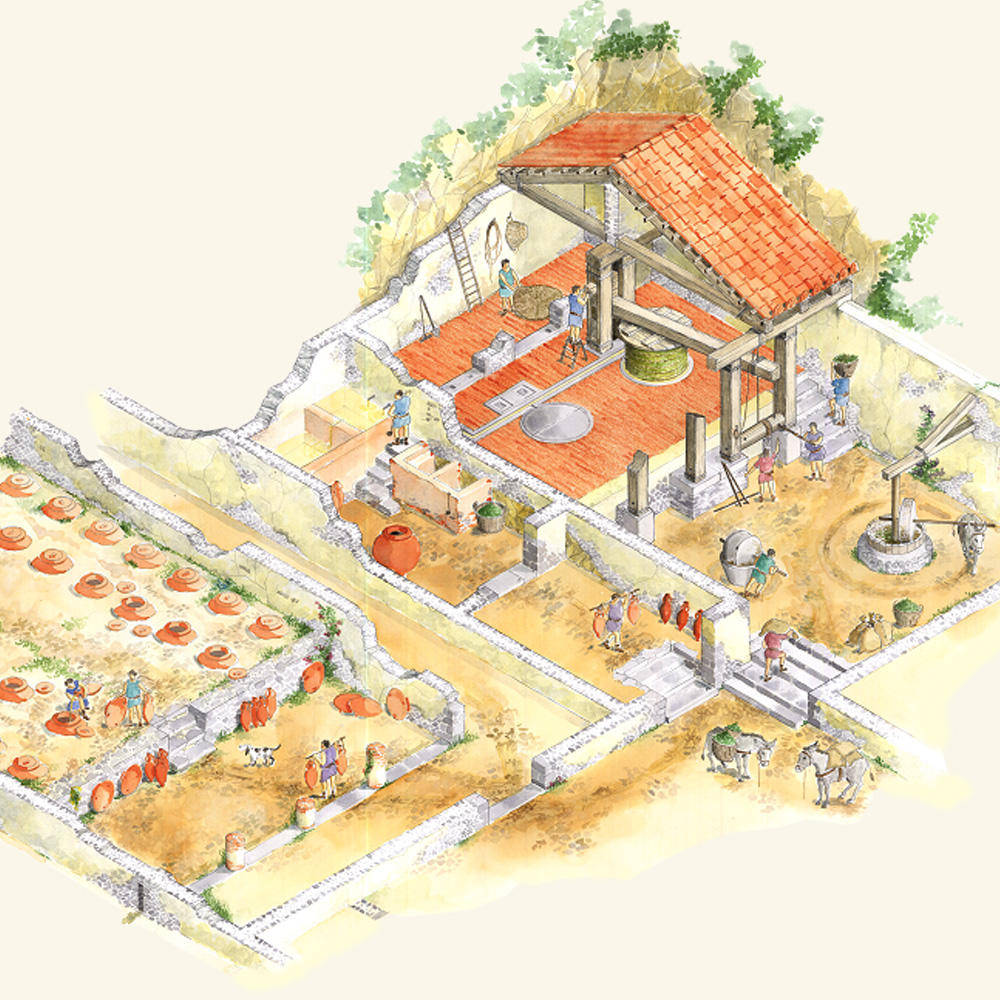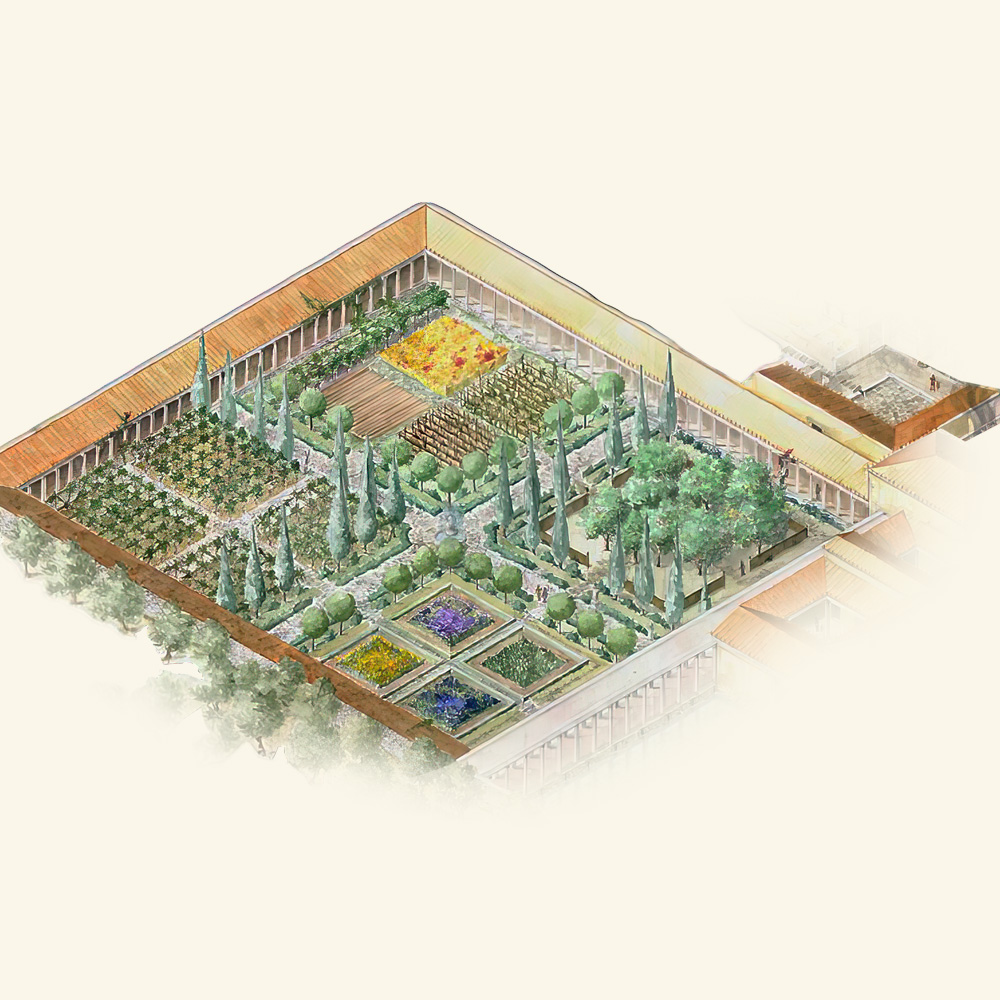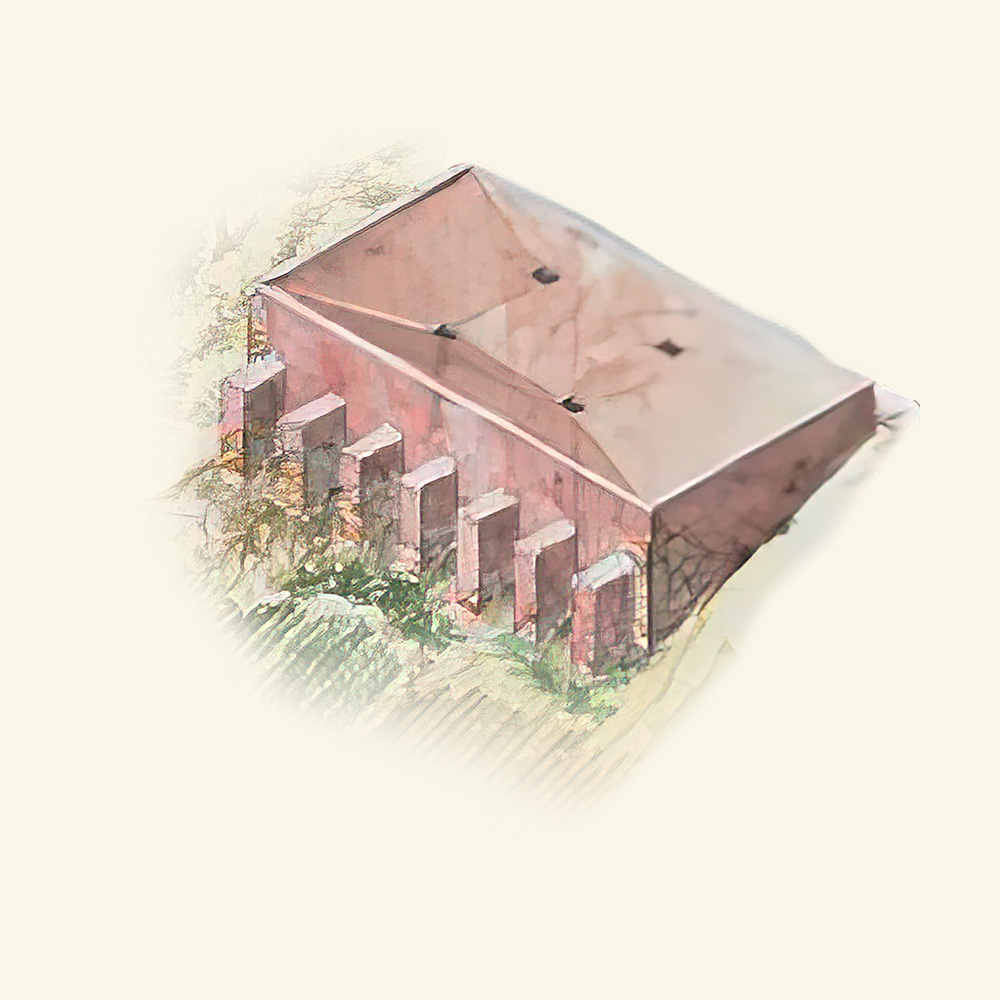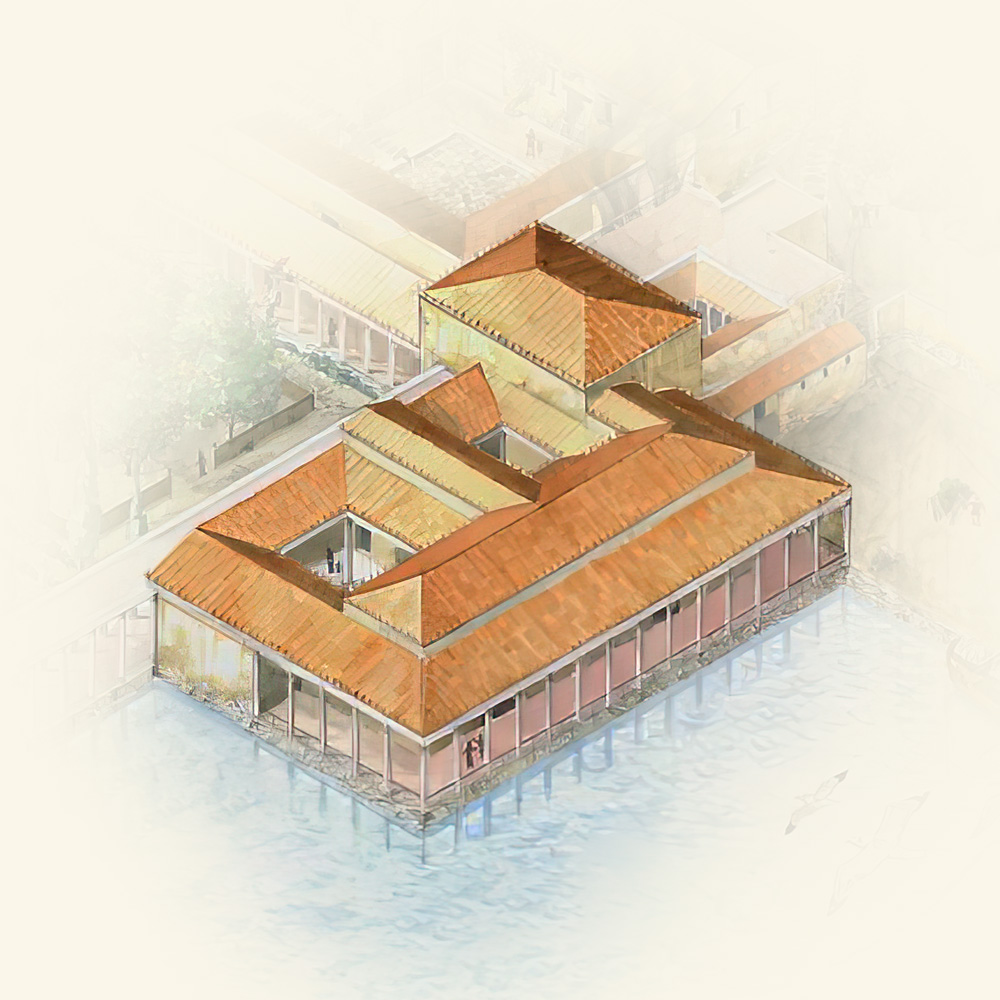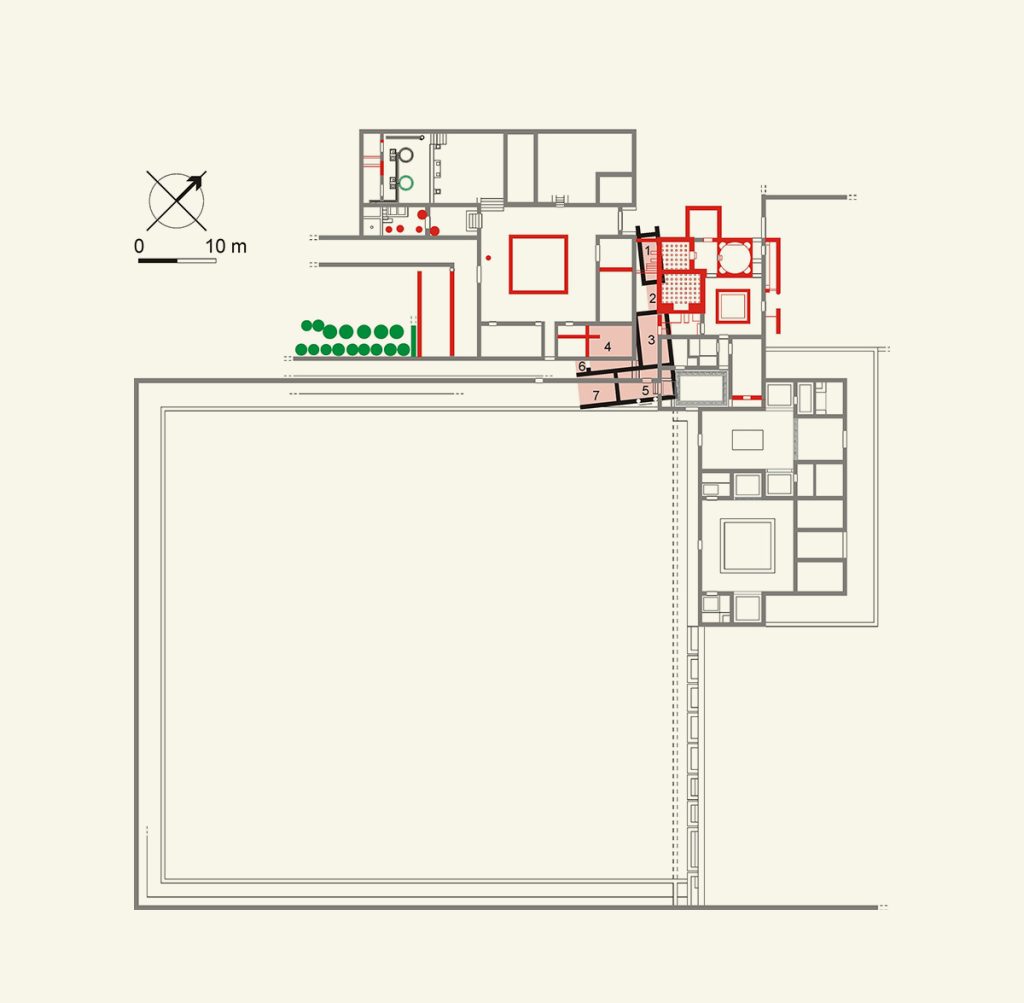The cistern
In the 1st century AD, a cistern was built at the top of the eastern slope of the Varignano inlet. The structure, embedded in the side of the hill, has a rectangular shape and is divided by a series of pillars connected by arches that run lengthwise; the entire internal surface is covered with cocciopesto to make the surfaces waterproof.
The cistern could contain over 570,000 litres of water that probably came from an underground river that is no longer active; to resist the pressure produced by such a capacity, the side facing downstream is reinforced on the outside by a series of masonry buttresses.
A system of lead pipes brought the water by gravity to the Villa and supplied the thermal areas in particular.
In the 18th century, the cistern was reused for the construction of a rural building (the current ticket office) with an adjoining stable; it was then restored in recent years to reconstruct the partially collapsed roof and to make it accessible to visitors.

